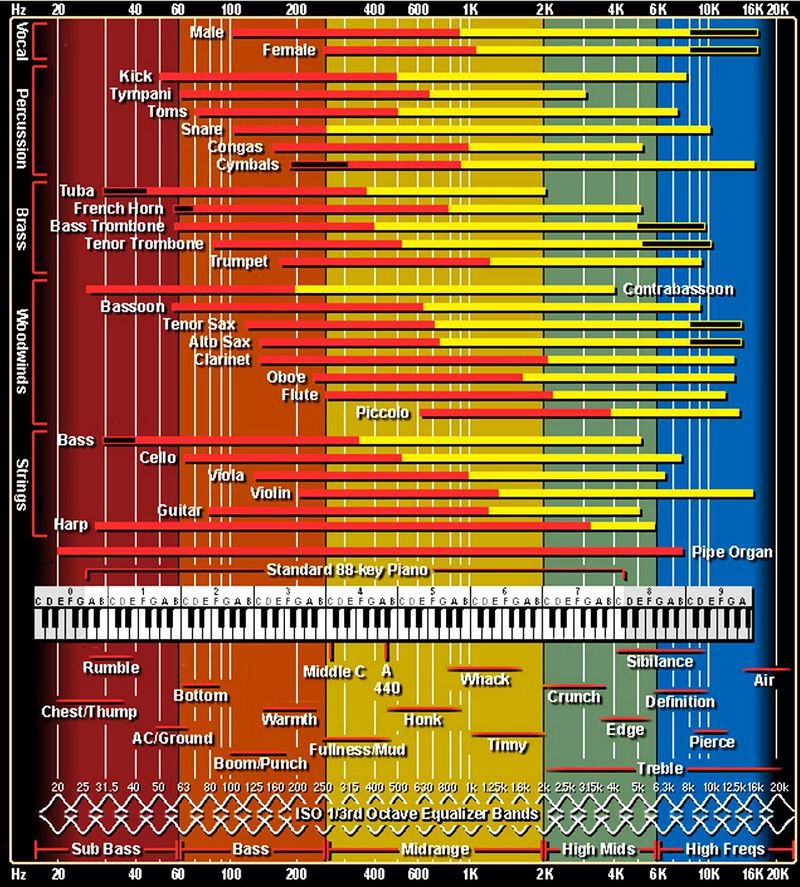This is the wiki for products made by Fractal Audio Systems, maintained by members of the community.
Difference between revisions of "Describing sound"
Jump to navigation
Jump to search
| Line 2: | Line 2: | ||
Below are charts of standard audio terms, used with permission from [https://www.soundonsound.com Sound On Sound]. The graphic is also available as a poster in .PDF format: [https://www.soundonsound.com/sound-advice/sos-audio-frequency-chart poster] | Below are charts of standard audio terms, used with permission from [https://www.soundonsound.com Sound On Sound]. The graphic is also available as a poster in .PDF format: [https://www.soundonsound.com/sound-advice/sos-audio-frequency-chart poster] | ||
| + | |||
[[image:Frequency_chart_SOSUK-Nov2012-hires.png|900px|Used with permission from [https://www.soundonsound.com Sound On Sound.]]]<br> | [[image:Frequency_chart_SOSUK-Nov2012-hires.png|900px|Used with permission from [https://www.soundonsound.com Sound On Sound.]]]<br> | ||
Revision as of 11:04, 20 August 2025
When communicating, a common nomenclature for describing sound can be beneficial. It ensures we're all talking about the same thing. When you say honk
and I say honk
: if we're not both talking about the frequencies that occur between 400 and 1000 Hz on the audio spectrum, we're going to have a hard time communicating.
Below are charts of standard audio terms, used with permission from Sound On Sound. The graphic is also available as a poster in .PDF format: poster
Additionally, see More information
in the EQ page for… um… more… um… much more information.
And watch these videos…

